Remember the new world of financial opportunity that opened the day you turned 18? You could apply for a credit card. You could be approved for tens (or hundreds) of thousands of dollars in student loans. You could rent your own apartment.
And since you took a personal finance course in high school, you knew how to budget for it all, right?
Oh, wait.
It turns out only 25 states — exactly half — require high school students to complete at least one semester of personal finance. And the consequences bear that out.
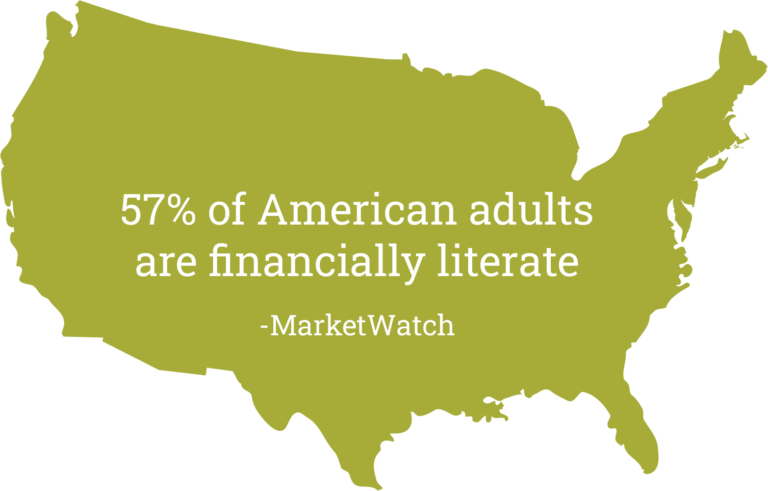
What’s more, the grades given by The Nation’s Report Card which rates each state’s financial literacy requirements, contain some surprising results.
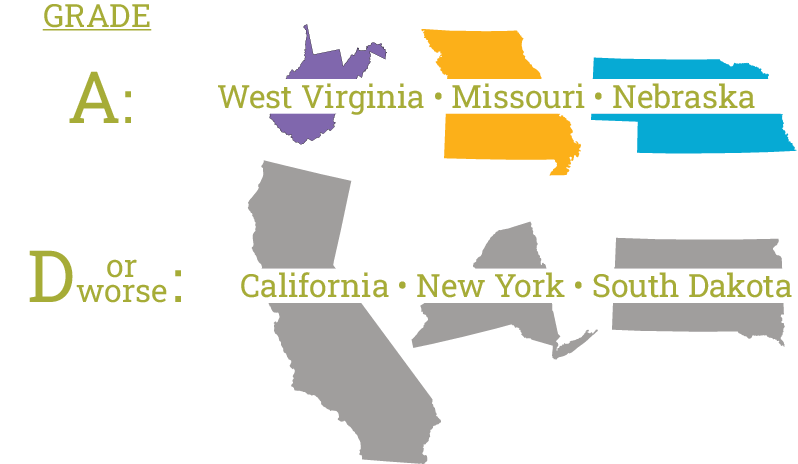
This financial illiteracy costs the average American around $1,500 per year due to poor budgeting, overspending and interest payments!
Similarly, marketing illiteracy can cost local banks and credit unions exponentially more — we’re talking millions and millions of dollars — in terms of lost customers and deposits.
But this begs the question: What kind of messaging should you use? First, we need to understand what people — especially Millennials and younger — want from their financial institutions. And then we need to identify which media to use.
Let’s dig into that.
Younger People Want Anytime Access
“Bankers’ hours” might be a good thing for people who work at financial institutions. But for the customers who want to visit a branch in-person? Not so much.
To attract new depositors, this perceived lack of convenience — and locations — presents a major concern that needs to be addressed.
In short, accessibility is paramount.
Generational Preferences in Banking
Generation Z
76%
prefer digital banking
6%
prefer in-person banking
Millennials
86%
prefer digital banking
5%
prefer in-person banking
Generation X
62%
prefer digital banking
8%
prefer in-person banking
Baby Boomers
48%
prefer digital banking
20%
prefer in-person banking
Source: Kiplinger
That data is to be expected. But what features within online banking does each generation consider must have? The results are somewhat surprising.
Generation Z *
- Faster payments/quicker transfers
- Automated savings and investment tools
Baby Boomers **
- Simple planning tools
- Quick access to accounts and financial advice
- Personal Finance Management tool (PFM)
- Debt & investment management tools
- Quick and easy way to transfer funds
- Fraud protection
Millennials *
- Faster payments/quicker transfers
In General ***
- Mobile check deposit
- Goal trackers
- Automated Savings
- Financial calculators
- Budgeting tools
- Person-to-person payments
- Integration with mobile wallet
Sources:
*Javelin Strategy **Enterprise Bank and Trust *** Lumber Digital
Oddly enough, Boomers seem to want the most features. It could be that younger generations expect that type of functionality. Regardless, if you can tout you have technology that legitimately addresses these needs, it might make sense to make this digital-first messaging the cornerstone of a campaign — especially if you’re interested in targeting Millennials or younger.
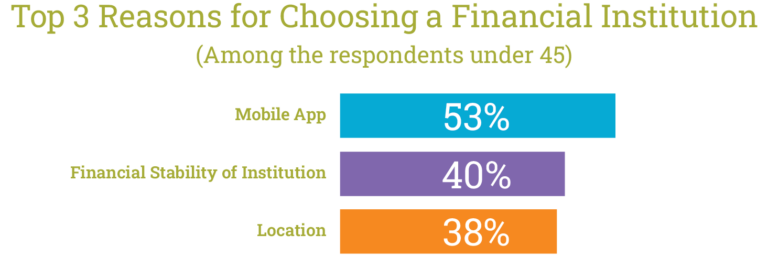
Source: Sogolytics
Younger Bankers Value… Their Values
How you spend or invest your money reflects your values to a certain extent.
Every can of soup we buy, every individual stock we invest in implies we support the company that makes the products we use. And let’s be honest: Wall Street and mega banks haven’t exactly done much to endear themselves to the average American over the past couple of decades.
In fact, positioning your financial institution as the opposite of a mega bank could mean being viewed more favorably.
Generation Z
65%
Trust in
Local/Community Banks
45%
Trust in Mega Banks
Millennials
72%
Trust in
Local/Community Banks
50%
Trust in Mega Banks
Generation X
70%
Trust in
Local/Community Banks
55%
Trust in Mega Banks
Baby Boomers
68%
Trust in
Local/Community Banks
60%
Trust in Mega Banks
Sources: FinTech Magazine American Bankers Association Extractable
That has led many to migrate to financial institutions whose values align with theirs — especially Millennials and younger.
46%
of Millennials say community involvement is an essential characteristic of the “perfect” financial institution
73%
of Millennials prefer to do business with companies that align with their values
75%
of Millennials make financial decisions based on their personal values
This means, all things being equal, would-be depositors are more likely to do business with a financial institution that tries to make life better for all.
And since community banks and credit unions are likely equal — if not better — in terms of fiscal service (e.g. online banking, checking and savings, etc.) compared to “mega” banks, leaning into community service messaging might make a difference.
Younger Depositors Value Advice
Remember how woefully inadequate our country is when it comes to financial literacy?
That affects lives in tangible ways, most obviously in the form of many not knowing how to manage their finances (at best). And mismanaging their money (at worst).
It’s no wonder, then, that younger depositors not only need advice —they want it.
Among Depositors 18-24:
Odds are your website, app and employees can provide basic financial recommendations and guidance. Promoting this service, free of charge, shifts perceptions of your branch just being a place to store money to a resource that helps members be wiser with their money.
So, Where Do Millennials and Younger Turn for Financial Advice?
According to a recent Bankrate survey, resources range from in-person to print.
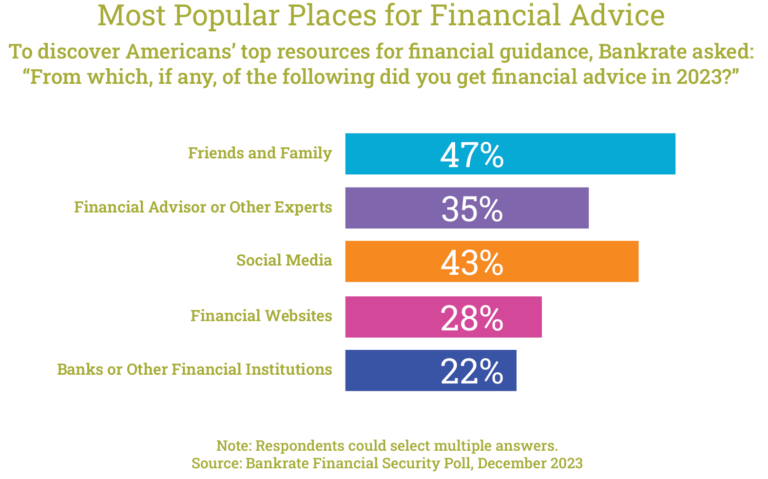
But maybe this shouldn’t come as a surprise, given how trusting (or not) different generations are of news sources.
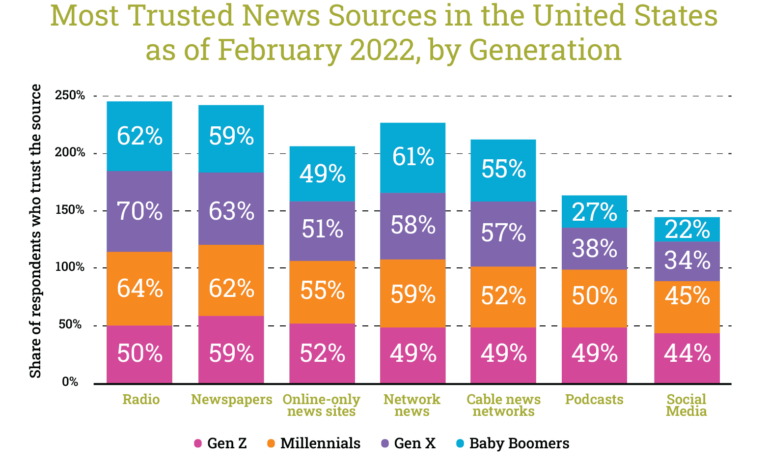
In search engine optimization, algorithms contain hundreds of ranking factors. One of those is an abbreviation: YMYL (Your Money, Your Life). In short, sites with high levels of authority and expertise are given preference for searches pertaining to life-altering content. In this case: Your Wealth and Your Health. Actually, that sounds better than Your Money, Your Life.
Anyway, you wouldn’t ask a stranger on the street for advice on treating a rash on your arm, would you? But you would be more likely take the advice of someone your trust, like a friend or family member.
Or a content creator or forum that you’ve established a trusted connection with.
Key Takeaways
Life rarely happens in a vacuum. In this case, targeting an older audience one way can provide desired ripple effects when messaging a younger audience through a different medium.
For example, creating a campaign targeting Gen Xers through their preferred media that explains the “traditional” services your institution provides could result in new customers. This generation will likely need to see the same message multiple times before visiting a website or calling a phone number listed at the end of a traditional TV commercial.
Conversely, Millennials and younger are more apt to take immediate action once they trust a financial institution, which opens the door to more direct and targeted messaging. For instance, campaigns appearing on podcasts and social media around the topics of digital convenience, the ability to open an account online, or in the case of credit unions, non-profit financial status and “belonging to” or “being a member” to elicit a certain exclusivity, can re-shape their perceptions. QR codes delivered through OTT can give them the ability to open an account anytime, anywhere.
The Ideal Media Mix
Attracting Millennials — the largest demographic — and younger should be a priority for any financial institution. But ignoring older generations could prove costly.
Creating a media strategy, with appropriate messaging per audience, is an investment worth the effort.
Reach out and let’s discuss how our media buyers and strategists can build brighter financial futures.
Not just for your customers, but for your branches.
Marketing to a new audience is like trying to find that special someone. Or, if you’ve already forged a lasting bond with a partner, marketing can be like maintaining that relationship.
Think about it.
If you’re venturing into a new location where no one knows you exist, you need to pull out all the stops (or at least more of them) if you want to make an impression. And if you’ve been in the same area for a while, you still need to put in the work if you want to keep the spark alive.
In short, you need to create — or change — your media strategy based on your market’s maturity.
So, what should your media strategy look like? Let’s find out.

Broadcasting a Grand Gesture (New Market)
The old saying “There are plenty of fish in the sea.” means you have options. Well, the same goes for your prospects. Odds are there are at least dozens of other companies who do what you do — or something similar.
In turn, you need to stand out by letting prospects know you exist in a memorable way.
So, if you’re trying to make a name for yourself in a newer market, that means high-reach media like TV or radio should be at the top of your list. Think dedicating a song on the radio, only in this case the song is a commercial made with your prospect in mind.
Casting your message where tons of prospects are likely to hear or see it ups your odds of getting multiple bites. And using newer advanced targeting features ensures you can be more precise with where you cast your net.
TV reaches 90% of US households weekly
Radio reaches 92% of US households weekly

Stay Top of Mind with Digital Marketing (Established Market)
If your market is mature (in the sense you’ve been there awhile), you still need to remind prospects and existing clients alike that you’re around. Admittedly, this is a delicate dance. You want to be known and remembered — but for the right reasons.

*66% say annoying or intrusive ad experiences reduce their trust in the brand advertising
* 71% agree that annoying or intrusive ad experiences make them less likely to purchase from that brand in future.
-Source: MediaCat
The important thing is to be included in your customers’ consideration set for new or upgraded services they want. And since you’ve established your market presence, meaning you’re more familiar with its personalities and needs, you can achieve this without being overbearing.
- Paid Search
- Display
- Retargeting
- Paid Social
Brands in the initial consideration set can be up to 3X more likely to be purchased than brands that aren’t in it.
-Source: McKinsey

Keep the Spark Alive with Out of Home (New Markets)
Early in your relationship, you might be more daring and adventurous. Riding in a hot air balloon? Sure, why not? The most expensive wine on the menu? Two bottles, please.
These high-impact experiences show the lengths you’re willing to go to win someone’s affection.
From an advertising perspective in new markets, that might mean surprising clients when and where they least expect it, like at a gas station. Or devoting a can’t-miss billboard they’ll drive by on their way to work. Or sponsoring their favorite sports team.
Out Of Home Advertising generates the highest percentage of brand recall
-Solomon Partners

Send Them Mail (Established Markets)
A key to any successful relationship is reminding your partner (or client) that you care. Yes, even if it’s obvious that you do. And yes, even if you’ve been together for decades.
In these circumstances, sending a personalized gift or note in the mail just might do the trick.
And in marketing, that can include hand-written direct mail with a special offer just for them.
Handwritten direct mail has a response rate more than 2X greater than traditional mail.
-Handwrytten

Tell Them a Story In Print or On Your Website (New Markets)
Think back to your first few dates with someone. They hardly know anything about you, like your favorite color or lucky number — let alone your deepest beliefs and biggest life goals. You spend hours and hours talking about yourself while listening in kind.
If you’re the new business on the block, you don’t have the benefit of brevity working in your favor. You need to provide a lot of details, including:
- What you offer
- Why you’re better
- What you stand for
- Company achievements or awards
- Promises, guarantees, reassurances
Print marketing has a 70-80% higher recall rate than digital advertising.
-Gitnux
In short, you need to educate. You need to build trust. But that requires time and space.
In this case, print — whether in the local paper, direct mail or area publications — or infinite-scroll websites makes a world of sense.
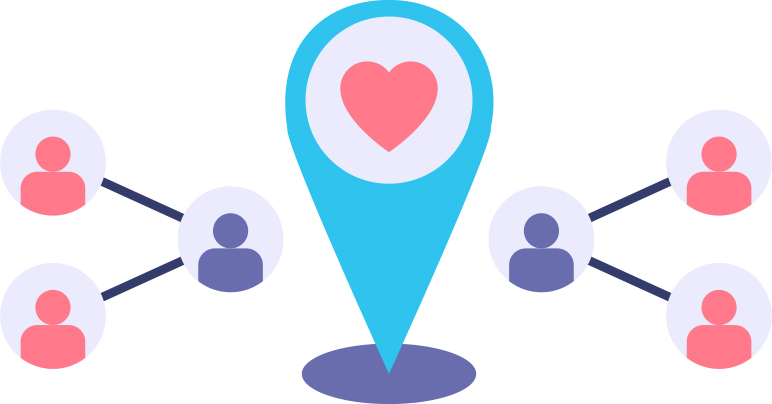
Gentle Retargeting Reminders (Established Markets)
Let’s say you and your flame of many years have a date planned months from now. Sure, you could just each enter the time and place in your separate calendars.
That’s not very romantic, though, is it?
Sending them a text with a restaurant’s menu or a recent setlist of the band you’re going to see during the months or weeks leading up to the big day builds the excitement. It reminds you both of what you’ll experience.
Retargeting serves the same purpose in established markets. It keeps the conversation going. It reminds your audience that you’re there. And, since they visited your site, you know the interest is mutual.
For example, if you’re in the financial space and want to re-engage with clients, consider retargeting them in other apps.
In-app retargeting can boost conversion rates by 38%.
-Criteo

Go Over The Top (New Markets)
Pretend you plan an extravagant day on the town for your new special someone: A picnic at their favorite park and appetizers at their favorite restaurant, followed by a pint at their favorite ice cream shop (or bar).
You’re going to their favorite locations.
Geotargeting achieves the same level of meaningfulness. And when you personalize your message at the right space at the right time, the sparks can really fly.
This can include serving a mobile ad that displays a special deal when your prospect is near one of your competitors. Or, showing an Over The Top (OTT) commercial speaking with “new customer only” messaging.
80% of Millennials and younger prefer advertisements that are customized to their individual interests and location.
-MarketSplash
Different Needs for Different Stages
We’re not dating coaches or relationship gurus. We’re just (really good) media strategists and buyers.
Every relationship, romantic and business, is different. But every relationship is the same in that effective communication helps unlock happiness. In marketing, the format, frequency and intent of your communication changes based not only on your goals, but your market maturity.
While a healthy mix of all media — digital, broadcast, social, print — is recommended regardless of your brand’s recall or geographic relevance, your recommended strategy depends on many factors, from target age to overall budget.
So, what would your ideal media strategy look like? Slide into our DMs or give us a call if you’re old fashioned.
And let’s see if we’re a good match.
There are all sorts of crazy marketing myths swirling around that might make you question advertising’s effectiveness.
And we have to admit: You can’t believe everything you see on TV or hear on the radio (or read online for that matter).
Pretty ironic coming from a full-service advertising agency, right?
But that shouldn’t keep you from advertising on TV, radio, or anywhere else. So, let’s shine a light on those lies that are hurting your company’s bottom line.

Video Production Is Just Too Darn Expensive
There was a time where we would’ve agreed. Today… well, not so much — and no, it’s not because of AI!
It really comes down to working with a full-service advertising agency (like Stealth Creative).
Here’s why.
We edit, film, and produce commercials in-house whenever possible because this cuts out the middleperson 95% of the time — and that can cut costs in a big way without sacrificing quality at all.
Plus, it turns out your business really can’t afford not to have some sort of video presence for lots of reasons.
“Some of our most memorable spots were also some of our most creative not only in terms on concepting, but working within our clients’ budget.”
-Jeff Schaeffer, Senior Video Producer

Media Buys Cost An Arm and Two Legs
Not so fast.
The truth is, some media buys cost more than others.
For example, in traditional media like television, there exists a finite number of commercial breaks. A limited number of spots to fit a specific amount of time. So yes: it tends to be a bit pricier. There’s no escaping that harsh reality — it’s the (not so) free market in action.
Conversely, digital media buys can cost just pennies per thousands of views! And radio buys can actually be more affordable than you think.
However, budget-sensitive marketing heads realize they need a media strategy if they want a real shot at success. So, what do they do to make the cost more bearable? They try doing it themselves.
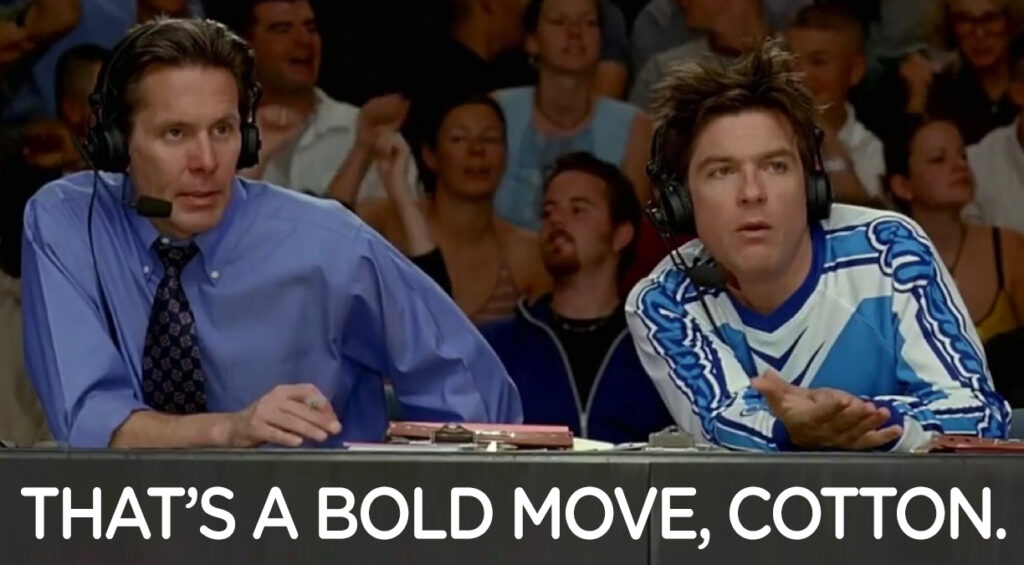
We appreciate that “can do” attitude… we just want to caution you.
35% in savings is an absolutely huge number! It could mean literally thousands of dollars — or more! That’s the same as being able to broadcast your commercial or message more often.
By working with Stealth Creative’s media buying team, you can:

Identify your real target audience

Pinpoint where they’re most likely to watch, listen or read

Benefit from the hard-nosed negotiating skills of your buyers

Experience a more collaborative approach between media placement and the spots produced
“The effectiveness of the message can be more important than the out-of-pocket cost alone. Ineffective impressions reaching your audience (even if they cost next to nothing) are not valuable. Agencies have the strategic experience and tools to develop these solutions to recommend the optimal Media Mix and tactical solutions to deliver against your goals.”
-Lisa Smith, Media Director

Proofreading is Overrated
What do an erroneous letter and missing zeros have in common?
They’ve all led to losses in the millions of dollars.
That’s right. Millions.
Take for instance a Yellow Pages ad (remember those?) from 1988. Banner Travel Agency wanted to promote their exotic travel packages. Someone at Pacific Bell swapped the “x” for an “r” and changed the message completely.
Proofing Cost: $10 million
Then there’s the fiasco involving Alitalia Airlines in 2006. They wanted to promote flights to Cyprus for $3,900. What they actually promoted was flights for $39. Who could pass that deal up? Answer: no one, which led to a nosedive in profitability.
Proofing Cost: $7 million
So, yes. Details matter quite a bit. And when you hire an agency, every piece of work gets read by multiple people before you lay eyes on it — proof that proofreading is worth it.
“Few things can sour your audience’s perception faster than an obvious typo. It makes them question your company’s professionalism.”
-Jeff Ryals, Creative Director

Your Business Should Be On Every Social Media Platform Ever
We won’t dispute the effectiveness of social media. That’s why Stealth Creative has a team of social media specialists!
Sure, your business could create a {insert newest social media platform here} profile. But do you really need to?
Let’s think about it, shall we?

Time:
The more platforms you’re on, the more:
• Content you need to create
• Posts you need to schedule
• Comments you’ll need to monitor

Commitment:
Creating a profile implies you’re going to be active and engaged. If you’re not up to the challenge, your image will potentially look unprofessional.

Relevancy:
A lawn service company should focus their efforts on Nextdoor instead of LinkedIn.
“Now more than ever, it’s important to be where your audience is. Social media is a very saturated place, so you want to make sure you stand out against the competition with content that your target market will resonate with. The more focused you are on the profiles you’re utilizing, the higher the likely quality of the content. Don’t spread yourself too thin – especially if your effort is being used on a platform your audience doesn’t frequent!”
-Kirsten Hackett, Social Media Director

My Company is Too Small to Hire an Agency
This is the myth we want to banish more than any other.
Why? Because in business, as in life, it’s not where you start but where you finish.
Let’s face it: Most companies aren’t an overnight success. They spend months, maybe years, building an audience and carving out a niche, slow but steady.
Then, whether through a website redesign that emphasizes user experience, a breakthrough idea for a commercial or one savvy media strategy, they captured the market’s attention — and odds are an advertising agency helped somehow.
“Smart, strategic marketing can be the great equalizer — and it’s not reserved for household brands. If you’re hungry for growth, it can only help to get input from people whose career is helping businesses become more successful.”
-Dan O’Saben, Owner
It’s a Fact: We’re Ready to Market YOUR Company
And Stealth’s advertising case studies prove that we can make a difference for clients.

Brian Reinhardt
Brian Reinhardt is a Senior Copywriter at Stealth Creative whose first unpublished story was penned at the age of eight. Yes, it involved hoverboards, lasers and robots. His days are filled with researching, content creation and SEO strategy. His nights are spent with family, reading and managing too many fantasy sports teams. Nine is his favorite number.
It’s no secret that the holiday retail season has been in flux the past few years. For decades, Black Friday was THE shopping day of the year. Consumers made their lists, researched pricing for their must-have gifts, and then stood in long lines — sometimes even overnight in the cold — to score great deals.
Not anymore.
The addition of Cyber Monday, Green Friday and the general ease of shopping online have all changed how marketers and consumers approach the holiday sales season. These days, Black Friday starts in early November, and many people never have to even set foot in a store to get their holiday shopping done.
COVID-19 has also affected so many aspects of our lives. What does it mean for consumer behavior? While we’ve embraced the convenience of online shopping in recent years, now it’s a matter of safety. How will this year’s retail season look different?

The retail season has started earlier than ever this year. People are staying home more, having time think about gift giving earlier and simply looking forward to the holidays. And now that the flood of political ads has passed, there is space for retailers to get into the market early to reach consumers who are ready for the holidays. Marketers need to be strategic in planning their media buys to cover key timing and maintain the frequency needed for their messaging to reach consumers now, when they are in a holiday shopping mindset.

Ecommerce continues to pick up speed year over year, and it will be in even higher demand this season. Reaching consumers online while they’re shopping is key. Search, programmatic and social campaigns can all connect consumers with the products they want during the holiday shopping season. Helping consumers make purchase decisions makes their shopping experience more pleasant while also driving sales.

This year may look different for consumers in terms of staying close to home with their immediate families, but the holiday season will still be filled with joy. Holiday programming on TV, radio stations switching to holiday music and social feeds full of well wishes are all opportunities to engage with consumers in meaningful ways. It’s also a great time to give back, and many corporations do just that. Regardless of how consumers decide to shop this gift giving season, spreading joy will remain the focus this year.
Traditions and spending time with family will be as important as ever this season — it may just look a little different. Staying safe while celebrating in new and different ways will be challenging, but also provides the opportunity for creative solutions.
If you’d like to explore strategic, innovative ways to reach your audience during this season or any season, let’s talk! Stealth Creative exists to connect businesses with success, and our traditional and digital media experts are at your service.